The_First_Clearance_Diver
![]() Thank you to the Historical Diving Society (HDS) and those who have uncovered and shared this fascinating history. Any errors are entirely my responsibility
Thank you to the Historical Diving Society (HDS) and those who have uncovered and shared this fascinating history. Any errors are entirely my responsibility
 Someone forwarded me a link to James Nestor’s account of the Deane brother’s unfathomable exploits in Epic Magazine. An excellent read.
Someone forwarded me a link to James Nestor’s account of the Deane brother’s unfathomable exploits in Epic Magazine. An excellent read.
A quick note re the Deane Brothers and particularly John Deane’s work clearing naval mines in the Crimean War….
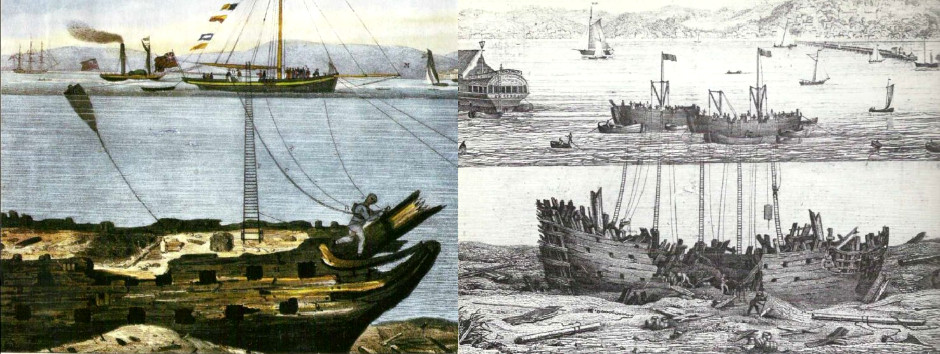
Deane brothers diving on the wreck of the royal George, 1832
The classic ‘standard dress’ diving helmet was invented by Charles Deane in 1823 as a breathing apparatus for entering smoke-filled rooms. It was first prototyped in 1827 and then neglected, until he and his brother, John Deane, realized that it might be the answer to breathing underwater. There were numerous shipwrecks around the coast of Britain and many men had sought means to salvage and plunder their hidden treasures. There were some interesting attempts and a few modestly successful pre-cursors, but the Deane helmet can be viewed as the first ‘proper’ diving equipment.
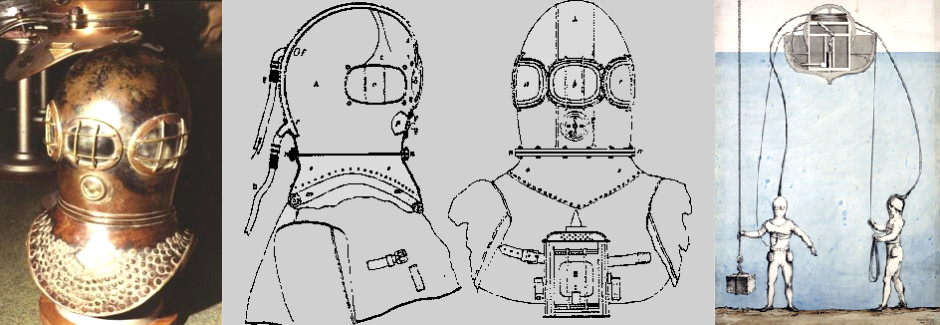
The Deane brothers were soon recovering cannon and other valuables from wrecks all around Britain, notably including the Royal George, a 100-gun first-rate ship of the line which had sunk in off Portsmouth on 29th August 1782 with the loss of over 800 men.
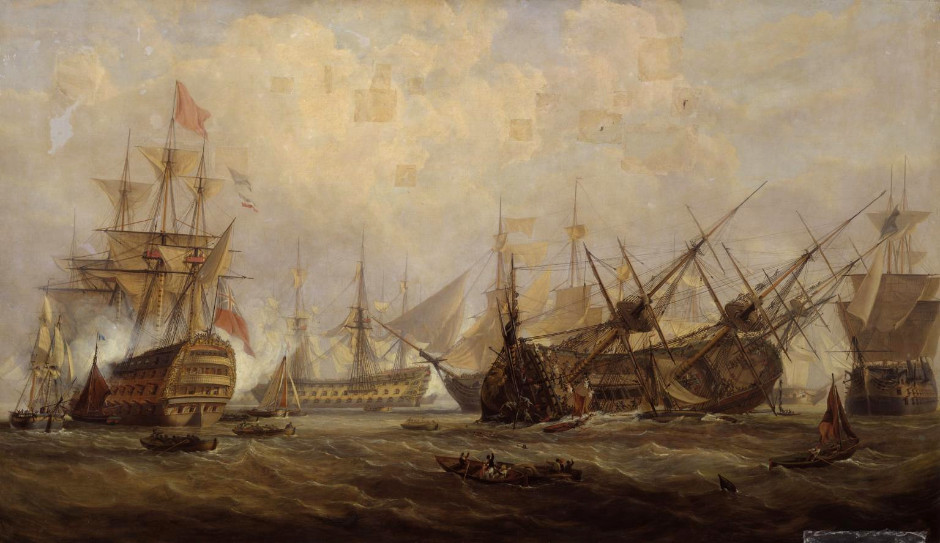
Loss of the Royal George by John Christian Schetky, c1840
The brothers became incredibly wealthy by salvaging wrecks but Charles was less able than John to keep onto his wealth. Although he had patented his ‘smoke helmet’ in 1823 he’d never mentioned its potential use underwater so soon others were making copies of his design. The most famous was by Augustus Siebe (ref Siebe Gorman diving manufacturer). John battled with court cases, drink and insanity. His mental health issues were possibly due to Nitrogen Narcosis caused by diving too deep, which was completely unknown at the time. Charles committed suicide in 1848.
In October 1854 John Deane was approached by the Royal Navy to take his diving helmet to the Crimea where the war was not going well for them.
Crimea
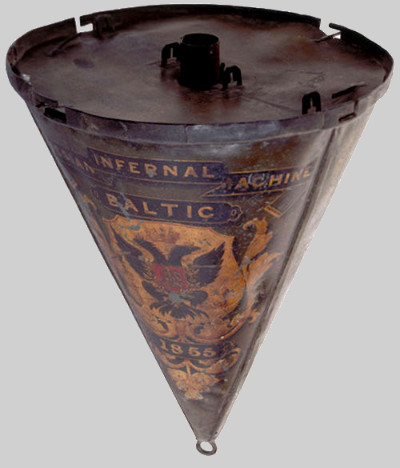 John Deane had gone to Crimea to help the Royal Navy clear sunken Russian wrecks which were blocking the harbor at Sevastopol. Deane was the world’s most experienced helmet diver and had devised a means of using explosives to break down wrecks for salvage, so he was the ideal man for the job. But the navy couldn’t get him close enough to the wrecks so attention turned to another Russian defense, the entirely newfangled sea mine, known as the Infernal machine.
John Deane had gone to Crimea to help the Royal Navy clear sunken Russian wrecks which were blocking the harbor at Sevastopol. Deane was the world’s most experienced helmet diver and had devised a means of using explosives to break down wrecks for salvage, so he was the ideal man for the job. But the navy couldn’t get him close enough to the wrecks so attention turned to another Russian defense, the entirely newfangled sea mine, known as the Infernal machine.
Immanuel Nobel’s (father of Alfred Nobel) ingenious sea mine was almost certainly the first of this type of weapon. Conceived in the 1840s while Nobel was in the pay of the Russian Tsar, it was first used against the British and French navies during the Crimean War.
The Infernal machine was anchored to the sea floor so that it floated just below the surface. It was detonated via an electric current carried along a cable from a boat or the shore. So each mine had an anchor rope plus an electrical cable. No one had attempted to defuse any of the new contraptions.
Using his brother’s invention, John dived on the site of some of the mines blocking access to the Sea of Azov and, as if that wasn’t dangerous enough, cut the electric cables. On the first cut he cannot have been certain that it wouldn’t detonate the mines but fortunately it didn’t. No one had ever attempted anything like this before, he was the first Clearance Diver. Once disconnected from the electrical trigger cable, the anchor ropes could be severed and the mines floated to the surface where they could be dealt with by sailors. Deane was able to clear a path through the minefield allowing the British fleet to advance into the Sea of Azov and cut off the Russian’s supply lines, ending the siege of Sevastopol. John Dane was a hero.
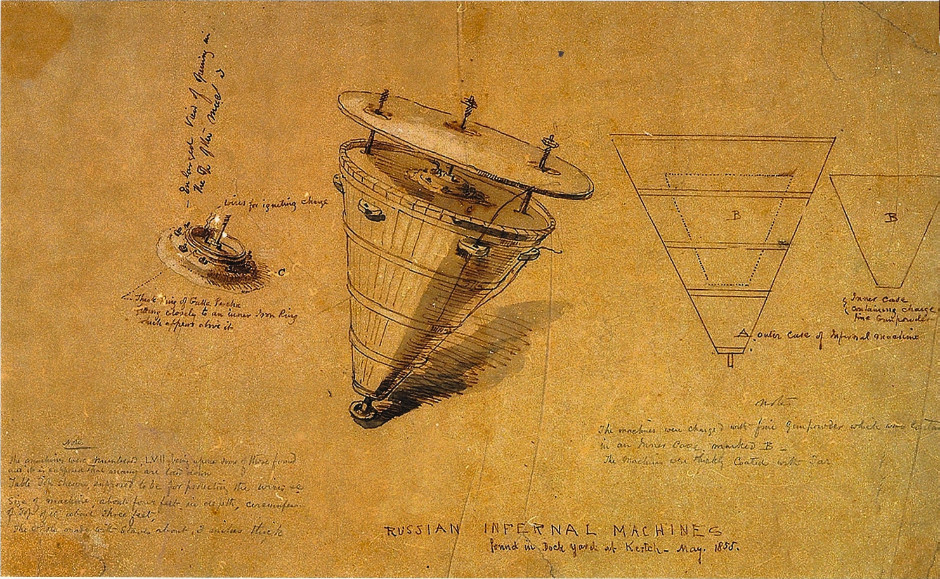
Image found at a great resource: http://intelmsl.com/insights/history/wti-and-sensitive-site-exploitation-in-1855/
Further Reading
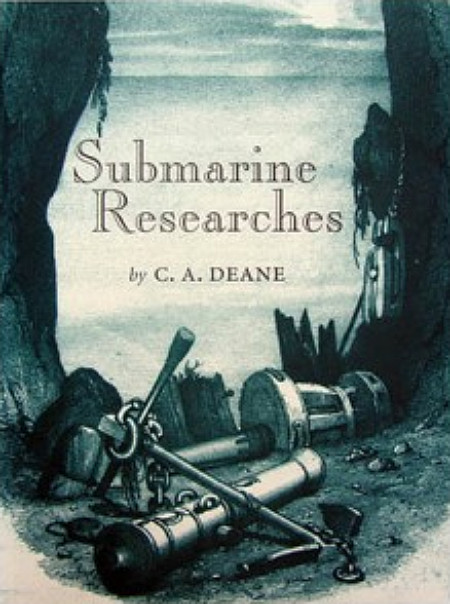 The Historical Diving Society (HDS) have helped republish Charles Deane’s incredible ‘Submarine Researches’ from 1853 (Hard backed with a dust jacket. 260 mm x 200 mm (10.25 in x 8 in), superb period illustrations, limited edition of 750 copies.
The Historical Diving Society (HDS) have helped republish Charles Deane’s incredible ‘Submarine Researches’ from 1853 (Hard backed with a dust jacket. 260 mm x 200 mm (10.25 in x 8 in), superb period illustrations, limited edition of 750 copies.
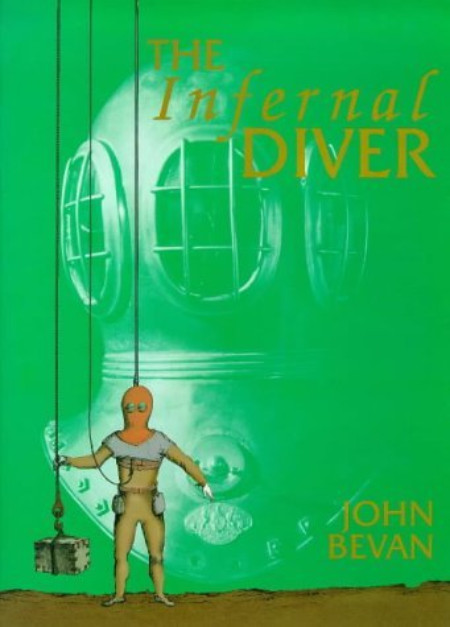 HDS chairman Dr John Bevan also wrote a historical book on the subject which is still available from Amazon although prices seem to have skyrocketed. I haven’t read this but I have heard about it and it is the text on the subject.
HDS chairman Dr John Bevan also wrote a historical book on the subject which is still available from Amazon although prices seem to have skyrocketed. I haven’t read this but I have heard about it and it is the text on the subject.
